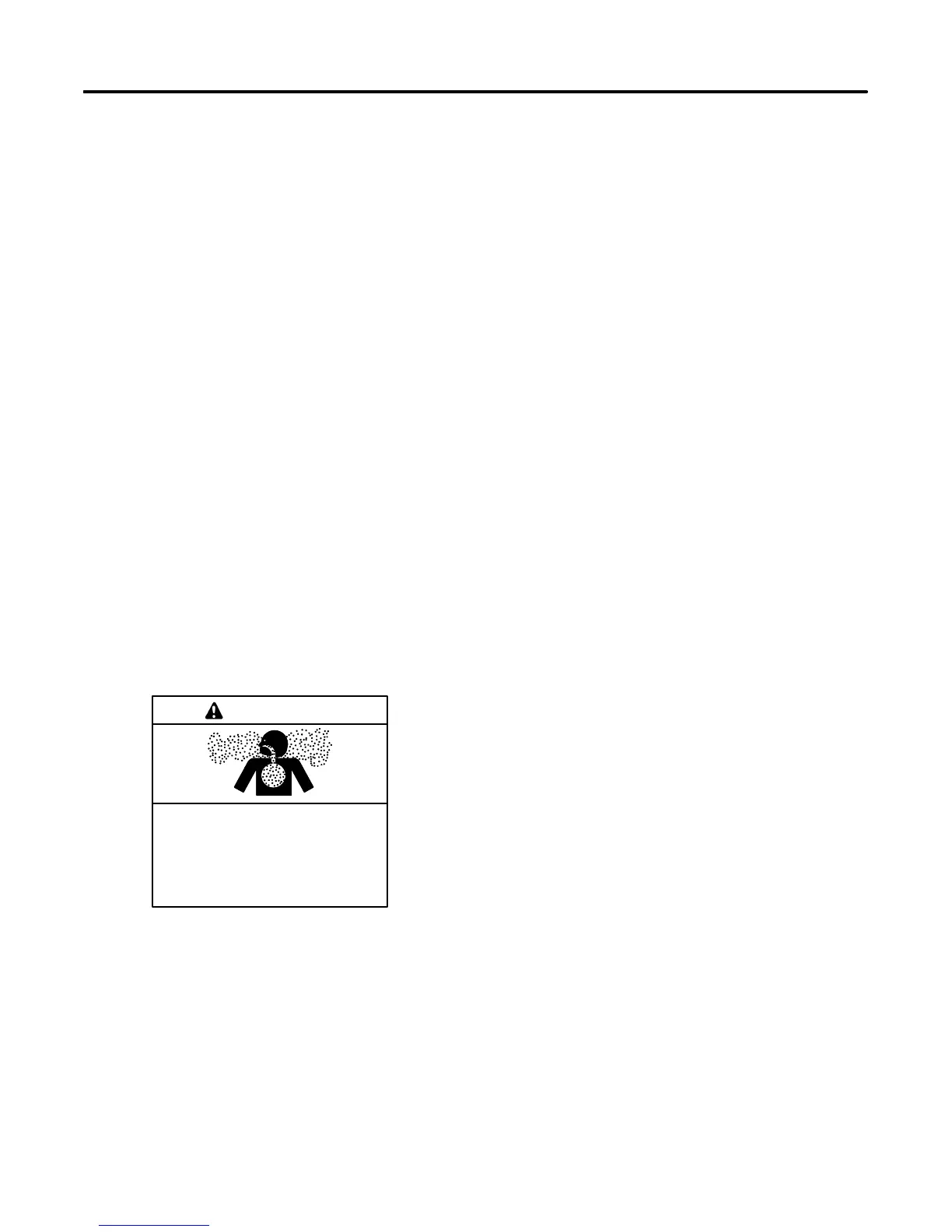TP-6053 7/04 11Section 3 Intake and Exhaust System
Section 3 Intake and Exhaust System
3.1 Air Intake Silencer/Filter
A dry-type air cleaner silences and filters the intake air.
The air intake silencer assembly connects to the intake
manifold via a flexible hose.
At the interval specified in the service schedule, clean or
replace the air intake silencer. Clean or replace the air
cleaner more frequently in dirty, dusty conditions.
Follow the procedure described below.
Air Cleaner Service/Replacement Procedure
1. Release the four spring clips to open the housing
and remove the air silencer element.
2. Tap the element lightly against a flat surface to
dislodge loose surface dirt. Do not clean the
element in any liquid or use compressed air as
these will damage the filter element.
3. Examine the element and its housing for damage
and wear. Replace the element or its housing, if
necessary.
4. Wipe the cover and base with a clean rag to remove
any dirt. Make sure the sealing surfaces fit
correctly and reattach the spring clips.
3.2 Exhaust System
Carbon monoxide.
Can cause severe nausea,
fainting, or death.
The exhaust system must be
leakproof and routinely inspected.
WARNING
Inspecting the exhaust system. Carbon monoxide can
cause severe nausea, fainting, or death. For the safety of
the craft’s occupants, install a carbon monoxide detector.
Consult t he boat builder or dealer for approved detector
location and installation. Inspect the detector before each
generator set use. In addition to routine exhaust system
inspection, test the carbon monoxide detector per the
manufacturer’s instructions and keep the detector operational
at all times.
Check for exhaust leaks and blockages. Check the
silencer and piping condition and check for tight exhaust
system connections.
Inspect the exhaust system components (exhaust
manifold, mixing elbow, exhaust line, hose clamps,
silencer, and outlet flapper) for cracks, leaks, and
corrosion.
D Check the hoses for softness, cracks, leaks, or dents.
Replace the hoses as needed.
D Check for corroded or broken metal parts and replace
them as needed.
D Check for loose, corroded, or missing clamps.
Tighten or replace the hose clamps and/or hangers
as needed.
D Check that the exhaust outlet is unobstructed.
D Visually inspect for exhaust leaks. Check for carbon
or soot residue on exhaust components. Carbon and
soot residue indicates an exhaust leak. Seal leaks as
needed.
D Ensure that the carbon monoxide detector is (1) in the
craft, (2) functional, and (3) energized whenever the
generator set operates.
3.3 Mixing Elbow
Check the mixing elbow for carbon buildup and
corrosion inside the pipe. Clean the residual carbon
buildup with a wire brush. Inspect the exhaust manifold
flange for cracking and corrosion. The mixing elbow
combines high temperature exhaust and cooling
seawater. The mixture, when exposed to engine
vibration, makes conditions conducive to rapid
deterioration and failure if not correctly maintained. If
any damage is detected with the mixing elbow or other
exhaust components, replace the damaged components
to prevent engine exhaust (carbon monoxide) leakage.

